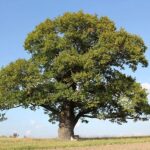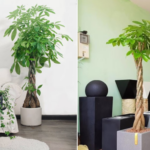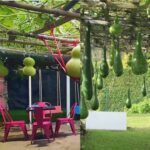The Money Tree, or Pachira aquatica, is a popular houseplant in feng shui practices and is believed to bring good fortune and prosperity. The word “kim” in Vietnamese translates to gold, signifying wealth and abundance, while “tien” represents money and affluence. Thus, the Money Tree is thought to attract financial success and abundance for its owners.
However, this plant may not be suitable for everyone. There are two specific groups of people who are advised against keeping the Money Tree in their homes.
Families with Young Children or Pets
The Money Tree is an attractive houseplant that can enhance the aesthetics of any space and purify the indoor air. It is a low-maintenance plant that thrives indoors with its vibrant green foliage. However, it is important to note that the Money Tree contains calcium oxalate crystals, which can be harmful to humans and animals. If the sensitive mucous membranes of the mouth, tongue, lips, eyes, or throat come into contact with these crystals, it can lead to severe irritation and allergic reactions.
There have been reported cases of young children experiencing poisoning after ingesting the leaves of the Money Tree, requiring immediate medical attention. As children are naturally curious and tend to explore their surroundings orally, it is crucial to keep the plant out of their reach. If you have young children or pets at home, it is advisable to place the Money Tree in a safe location where they cannot access it.

The Money Tree is not just an ornamental plant but is also believed to bring good luck and fortune.
Individuals with Earth and Metal Elemental Profiles
When selecting plants for feng shui purposes, it is essential to consider your elemental profile or Chinese zodiac sign. According to feng shui experts, the Money Tree, with its vibrant green color, is most suitable for individuals with a Wood elemental profile. This is because green is the color associated with the Wood element.
In the generative cycle of the five elements, Water nourishes Wood, and Wood fuels Fire. Thus, individuals with Water and Fire elemental profiles can also benefit from the Money Tree’s auspicious energy. For those with a Water profile, it is recommended to grow the Money Tree in water, a technique known as hydroponics or water culture.
On the other hand, Wood is in conflict with Earth and Metal. Therefore, individuals with Earth or Metal elemental profiles may not find the Money Tree to be the best choice for their feng shui practices. However, if they wish to grow the Money Tree, they can mitigate the conflicting energies by planting it in a ceramic pot and adding white or yellow gravel on top of the soil. White is associated with the Metal element, while yellow represents Earth, creating a harmonious balance.
This information is provided for educational purposes and personal exploration only.
The Green Thumb’s Guide to Prosperity: 4 Lucky Plants to Bring Wealth and Fortune to Your Home
“Wealth lies in the water, prosperity in the earth.” This ancient proverb reflects a deep-rooted belief in the power of nature to bring fortune and abundance. The practice of nurturing aquatic life and cultivating greenery is not just a means to beautify one’s surroundings but also a way to attract positive energy, wealth, and luck, according to folk wisdom.






































